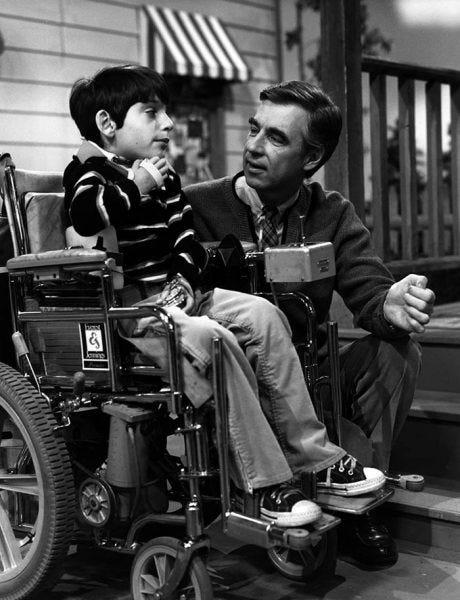Can We Talk? Style.
How mismatched styles are breaking public conversation - and what we can fix
What happens when a boxer tries to fight a scientist? Or a builder tries to fix a therapy client? In the real world, the mismatch is obvious: different tools, different goals, predictable disaster.
But in conversation, mismatches are less visible. They show up as tension, confusion, disappointment, or silence. We confuse passion for insight, certainty for wisdom, disagreement for danger.
And in the process, we lose the kinds of conversations we really crave. Ones with depth, surprise, learning, and connection.
I don't mean the type about what’s for dinner or who will pick up the kids, but the conversations that shape how we understand ourselves and each other. When they go wrong, it’s rarely because of the facts. It’s because we’ve triggered something personal, and we’re speaking in mismatched styles.
That’s where this guide comes in. It maps five distinct conversation styles - Boxer, Judge, Builder, Listener, and Scientist - and shows how clashes between them can sabotage even our best efforts to connect.
By learning to spot the styles - and shift between them - you gain more control, fewer crossed wires, and a better chance of having conversations that matter.
Let’s take a look.
The Five Conversation Styles
Why We Need Names for Styles
Each style is a simplification and that’s what makes it useful. With names, we gain shared language to describe the mood and mission of a conversation. This helps us quickly spot common clashes.
You might see a Boxer trying to score points, while the Judge carefully weighs the case. Or a Builder eager to move things forward while the Scientist holds back, unconvinced the problem is fully understood.
Naming the style gives us options. We can shift course mid-flow:
“Feels like we’re in a Boxer-Judge clash, want to switch styles?”
“Let’s both try Scientist for a bit?”
Sometimes, that one sentence is all it takes to turn conflict into collaboration.
What follows is a guide to all five styles: what each is good at, what each is bad at, and how to spot it in everyday life.
Think of it as conversational bingo. Once you know the styles, you’ll start seeing them everywhere: at home, in work, on social media, in journalism, politics, and TV panels. Over time, recognising the pattern becomes automatic, and shifting your style becomes a skill.
The Boxer
Mood
Boxer conversations come in hot: urgent, intense, emotionally charged. Conviction and identity take the lead. Questioning is sidelined.
Mission
To provoke, confront, and deliver impact. Boxers aim to wake people up, shift the mood, and force a response.
At their best, they break silence and stir emotion. At their worst, they burn bridges, treat disagreement as betrayal, and leave no room for dialogue.
The Good and the Bad
Checklist: Is this the Boxer?
Read down this list and mentally tick what shows up in the conversation. The more clues you see, the stronger this style is.
How strong is the style?
The Judge
Mood
Calm, measured, and mentally alert. Judge conversations pause where others pounce. They favour precision over passion, and clarity over speed.
Mission
To weigh, define, and deliberate. Judges seek shared understanding, test competing ideas, and guide people toward wise, well-reasoned conclusions.
At their best, they bring order to complexity and offer frameworks that help people decide wisely. At their worst, they stall action, dodge feeling, and get lost in theory while the world moves on.
The Good and the Bad
Checklist: Is this the Judge?
The more clues you see, the stronger this style is.
How strong is the style?
The Judge is trying to reach a fair, principled, and well-reasoned decision. One that can hold up under scrutiny, even if it means slowing everything down to get there.
The Builder
Mood
Energetic, focused, action-driven. Builder conversations are all about momentum. You’ll hear phrases like “OK, what now?” or “Let’s not get stuck.” The Builder isn’t here to debate endlessly or dwell on feelings, they want to improve the situation and get something done.
Mission
To fix, build, and move things forward. At their best, they break gridlock, translate words into action, and help groups progress. At their worst, they steamroll complexity, reach for solutions too soon, build on shaky foundations, and stampede in the wrong direction.
The Good and the Bad
Checklist: Is this the Builder?
How strong is the style?
Builders bring momentum. But sometimes the real fix is seeing the problem anew, not speeding toward a familiar solution.
The Listener

Mood
Calm, warm, and unhurried. Listener conversations focus on the person, not the problem. They validate, steady, and make people feel seen. The goal isn’t to fix your situation or change your mind, it’s to acknowledge and dignify your experience.
Mission
To create emotional safety through steady, compassionate attention. Listeners slow the pace, tune in fully, and stay with people, especially when things feel raw or unclear. They know that real change often starts with being heard. Before you can Build, Box, or Judge well, you may need to feel understood, even in your messiest emotions or most controversial thoughts.
At their best, Listeners acknowledge, comfort, and encourage. At their worst, they avoid challenge, enable rumination, or confuse compassion with collusion.
The Good and the Bad
Checklist: Is this the Listener?
How strong is the style?
Some conversations aren’t looking for fixes. Their goal is validation. The sense that someone is trying to feel with you, not deal with you.
The Scientist
Mood
Open, alert, and undaunted. Scientist conversations thrive on curiosity. They follow ideas into unfamiliar terrain, flip questions upside down, and ask the unaskable.
Mission
To explore what we know that just ain’t so. To ask what’s never dared to be asked. Scientists test assumptions and stretch perspectives. They’re not here to win, soothe, or solve, they’re here to discover. To chip away at what’s false and examine what remains.
At their best, Scientists expand our sense of what’s possible. They ignite leaps in insight by challenging what we think we know. At their worst, they drift into abstraction, detach from lived reality, or mistake provocation for progress.
The Good and the Bad
Checklist: Is this the Scientist?
How strong is the style?
This is the conversation style that wonders aloud. It helps us find the edge of our own map, and what’s beyond.
Conclusion: Bringing Back Better Conversations
Next time you're in a meeting, watching a debate, or chatting with friends - listen for the style.
Is it the Boxer rallying a cause? The Judge weighing facts? The Builder pushing for action? The Listener hugging the heart? Or the Scientist probing truths into uncomfortable parts?
Every style has its moment. But mismatches happen all the time. Someone grieving meets a Builder, someone experimenting meets a Boxer. That’s when conversations fail.
Try this instead:
Notice the style
Name the mismatch
Nudge toward what’s needed
Individually, it saves crossed wires, tension, and time. But collectively? This is how we shift the tone of public life for the better: one person, one moment, one conversation at a time.
In the mid-20th century, public conversations were often battles of ideas; messy, yes, but grounded in a shared belief that conversation required careful listening, reasoning, skill, and respect. They often had a physically present (facilitator) or socially felt (convention) referee to ensure the rules of the game were kept so the players could flourish.
In the past decade, especially online and in media, the referees and conventions have vanished, and the Boxer has dominated. Urgent, moralising, high on certainty, low on nuance. Looking to lay traps and land blows. We can do a lot better.
It’s time to rebalance: one person, one moment, one better exchange at a time. Over to you…
Bonus Material
Classic conversations
James Baldwin and Nikki Giovanni "A Conversation". Full Broadcast Video (1971)
James Baldwin Debates William F. Buckley (1965)
Civil Rights Leaders Dialogue On TV A Powerful Moment (1963)
Free To Choose - Milton Friedman on The Welfare System Featuring Thomas Sowell (1978) (Conversation starts from 27min40s)
A Listener
Remembering Mr. Rogers (1994/1997) | Charlie Rose
A Scientist
Fun To Imagine, Richard Feynman (1983)
A Mismatch
Triggernometry Meets Guilty Feminist (2025)























